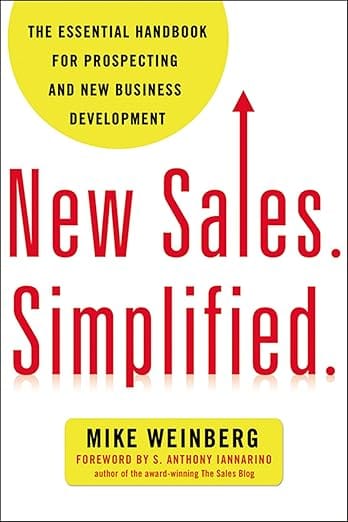When expectations are unclear nothing else in sales really works

Most sales problems look like skill gaps. People do not prospect enough. They chase the wrong accounts. They wait for input from others. They avoid real conversations.
But when you look a little deeper you often find something far less exciting and far more uncomfortable.
The expectations were never clear in the first place.
This is the silent pattern behind many of the issues in Mike Weinberg’s list. People cannot meet expectations they do not fully understand. And they cannot take ownership of a standard that no one ever spelled out.
Sales leaders often assume that expectations are obvious. We talk about goals, we talk about pipeline, we talk about outcomes. But clarity is not created by talking around topics. It is created by a shared understanding of what good sales behaviour actually looks like on a normal Tuesday.
This is where most teams drift. Not because people are unwilling. They drift because the guardrails were never built.
Expectation failures often start small
It usually begins with something harmless.
A rep delays first contact because they want more information.
Another one pushes follow ups into next week because they feel the client is busy.
Someone loses an hour on internal tasks because everyone else does it too.
None of this looks dramatic.
But every one of these small choices signals that the expectations are unclear.
If you ask ten salespeople on the same team what good prospecting means, you often get ten different answers.
That is not a performance issue.
That is a leadership issue.
What clear expectations really mean
Clear expectations are not a long list of rules.
They are a small number of simple standards that anchor behaviour and ownership.
In my view this works best in a hybrid form.
A few expectations that everyone understands deeply.
A few behaviours that matter more than any metric.
A few moments each week where accountability becomes visible and normal.
This is enough.
More than enough.
You do not need a KPI machine.
You need clarity.
My view on how to rebuild clarity
Below is my interpretation of the mitigations from Weinberg’s list, translated into what I believe leaders should actually do.
1. Make expectations explicit
Describe the behaviours you want to see.
Describe them in simple language.
Describe them repeatedly.
If you want early outreach, say it.
If you want tighter follow ups, say it.
If you want ownership of customer conversations, say it.
Silence creates drift.
2. Create rhythm not pressure
Weekly touchpoints are not about control.
They are about reducing ambiguity.
The rhythm shows people what matters.
The review makes expectations tangible.
3. Use KPIs as support structures
KPIs do not create accountability.
They support it.
KPIs can clarify direction.
KPIs can highlight gaps quickly.
KPIs can create healthy transparency.
But KPIs cannot fix unclear expectations.
I recommend a handful of transparent KPIs that everyone understands.
Not as rules.
Not as threats.
Simply as a shared structure.
4. Focus on behaviour
Metrics follow behaviour.
So coach the behaviour first.
Prospecting rhythm.
Quality of meetings.
Depth of discovery.
Follow up discipline.
Ownership of next steps.
A team that behaves well wins well.
KPIs I recommend as lightweight guardrails
These are not mandatory. They are not targets.
They are simple signals that show whether expectations are understood.
- Number of meaningful outreach attempts per week
- Time from lead received to first contact
- Number of qualified opportunities added to pipeline
- Hygiene of opportunity stages
- Consistency of follow ups
These KPIs should be visible and transparent.
But it is up to you how strictly you apply them.
The purpose is not to create pressure.
The purpose is to create alignment.
A question every sales leader should ask
Before blaming skill, motivation or market conditions, ask yourself one thing.
If your team struggles with prospecting, prioritisation or ownership
were the expectations ever truly clear?
Most of the time the answer is uncomfortable.
But discomfort is where better leadership starts.
Disclaimer
The content of this post is based on Mike Weinbergs books. Buy and read them here.
